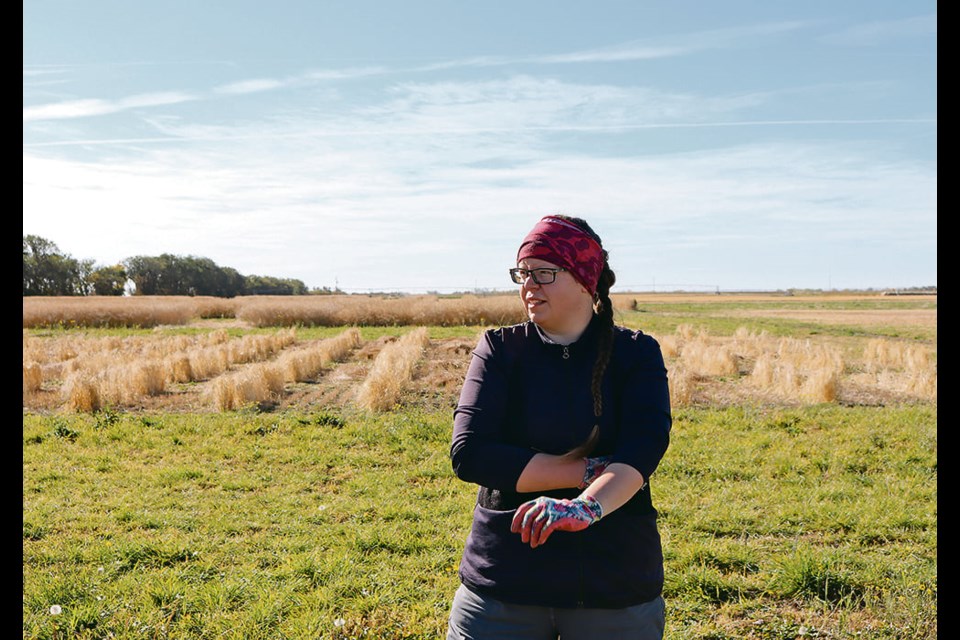WESTERN PRODUCER — In the fall of 2016, Meghan Vankosky had an “aha” moment.
Vankosky, an Agriculture Canada entomologist, was conducting a grasshopper survey in a crop of field peas in Western Canada. The crop was already combined but she noticed a large number of adult pea leaf weevils, feeding on volunteer peas at the edge of the field.
In that moment, she had her idea.
“That made me think. Maybe this is a way we could reduce the population (of weevils),” said Vankosky, who works for Ag Canada in Saskatoon and specializes in pests of pulse and oilseed crops.
Her idea was to attract adult weevils to a trap crop, then kill the pests with an insecticide or an insecticide alternative. That would reduce the number of pea leaf weevils that over-winter on the Prairies.
A trap crop could also be used in April or May, to kill adult weevils that emerge in spring.
In 2018, Vankosky’s idea became a research project.
The Canadian Pulse Science Research Cluster funded a three-year study of trap crops and alternative ways to control pea leaf weevils.
“It was really quite exploratory. It’s still very early, in terms of developing trap crops as a potential management option,” Vankosky explained. “What we wanted to know, was could we use trap crops in the spring or in the fall, to aggregate weevil populations and control them.”
Pea leaf weevils can be a difficult pest for field pea and fababean growers.
The adults overwinter in “alfalfa and other perennial legumes, roadside ditches and shelterbelts,” according to information on a North Dakota State University website.
The adults emerge in the spring, when temperatures are warmer than 15 C, and begin feeding on newly planted field peas or fababeans.
But the problems really begin when females reproduce.
The females lay thousands of eggs in the soil. Those eggs become larvae, which burrow into the soil and feed on the root nodules of pea and fababean plants.
“(This causes) significant damage to nodules,” the NDSU website states. “This damage also reduces soil- and plant-available nitrogen for the current and future crops, which results in poor plant growth and lower crop yields.”
Pea leaf weevils also feed on foliage of dry beans, lentils and vetch, but don’t cause economic damage. Chickpeas are not a host.
In the last couple years, pea leaf weevils haven’t been a major problem for field pea growers in Western Canada, mostly because of drought.
But when populations are high, pea leaf weevils can cause significant damage.
“We’ve had some pretty bleak years in southern Alberta; back in the mid-2000s,” Vankosky said.
In her research project conducted at the Ag Canada research station in Lacombe, Alta., Vankosky looked at trap crops in spring and the fall.
For the fall trap crop, Vankosky and her team seeded a strip of field peas or fababeans in July, so the strip would attract weevils in late August or September.
“In the fall, the new generation of adults come out and they’re looking for anything green to eat…. If we had a trap strip along the edge of a field, that would attract those new generation adults,” she said. “With using a trap crop (in the spring), the hope is you could focus insecticide applications on a small area a few times. And keep those adults from moving farther into the field.”
The results? The trap crops performed as expected.
“(They) definitely worked to bring those weevils in,” Vankosky said.
However, the researchers didn’t apply insecticides to kill the weevils. The purpose of the study was to show that trap crops can lure weevils into a small area.
Vankosky doesn’t yet have funding for the next stage of the research.
She would like to collaborate with growers to study the practicality of trap crops. Can they be part of an integrated pest management strategy for pea leaf weevils?
“At this point, it’s a dream…. If people are interested, I’d love to hear that,” she said. “Some kind of field trial with a farmer, to evaluate the time it takes, the effort it takes and the payoff. (Does it) reduce damage, increase yields and reduce the need for insecticides?”




